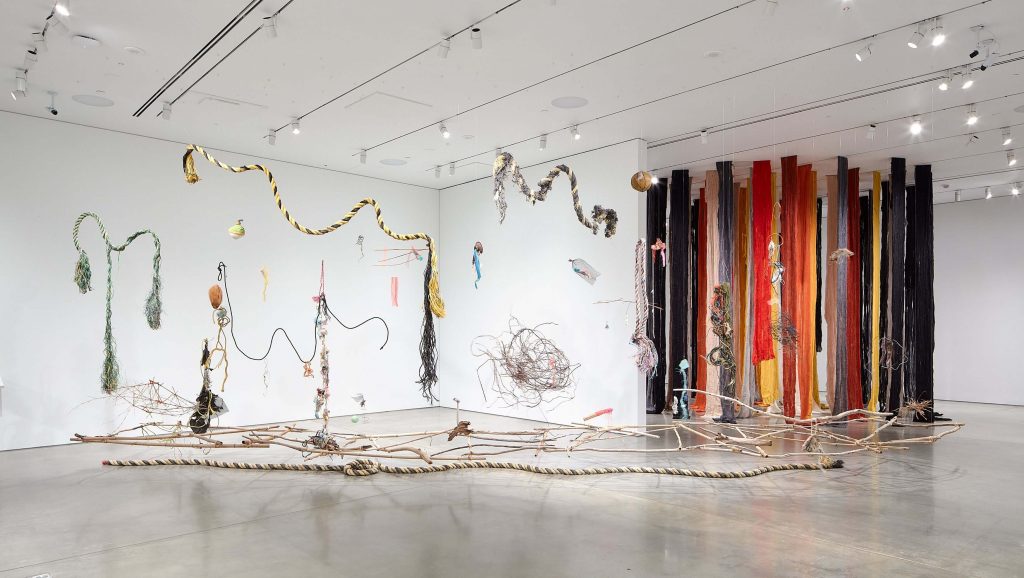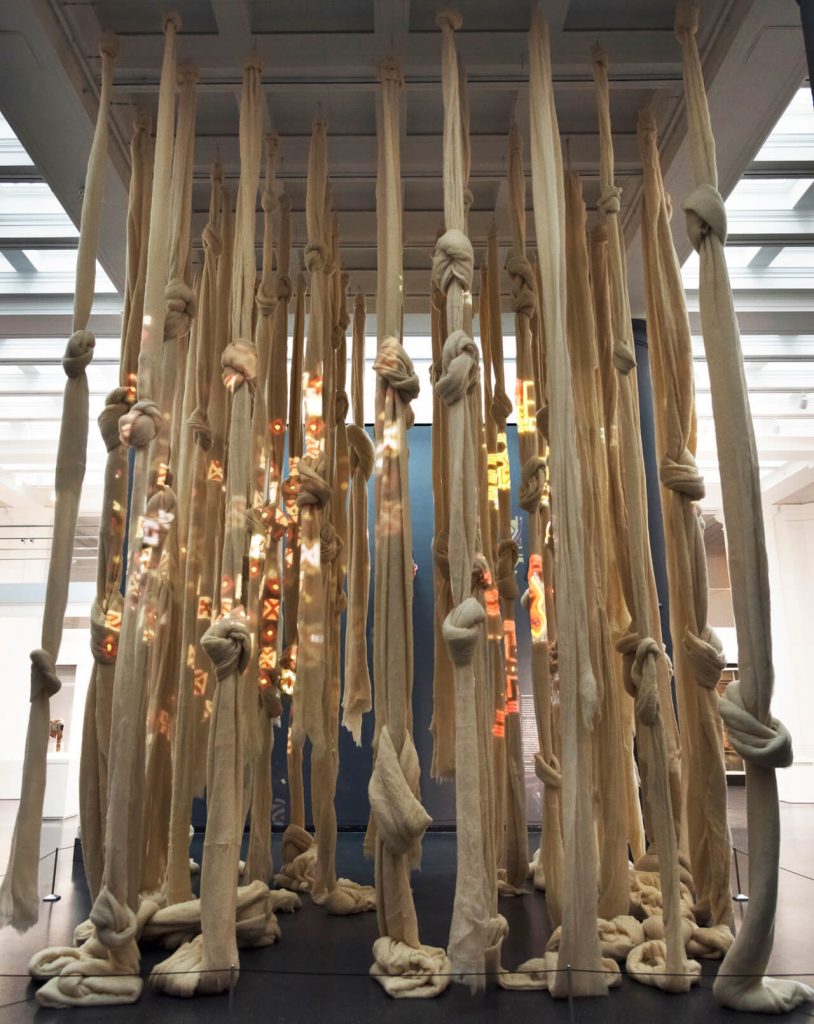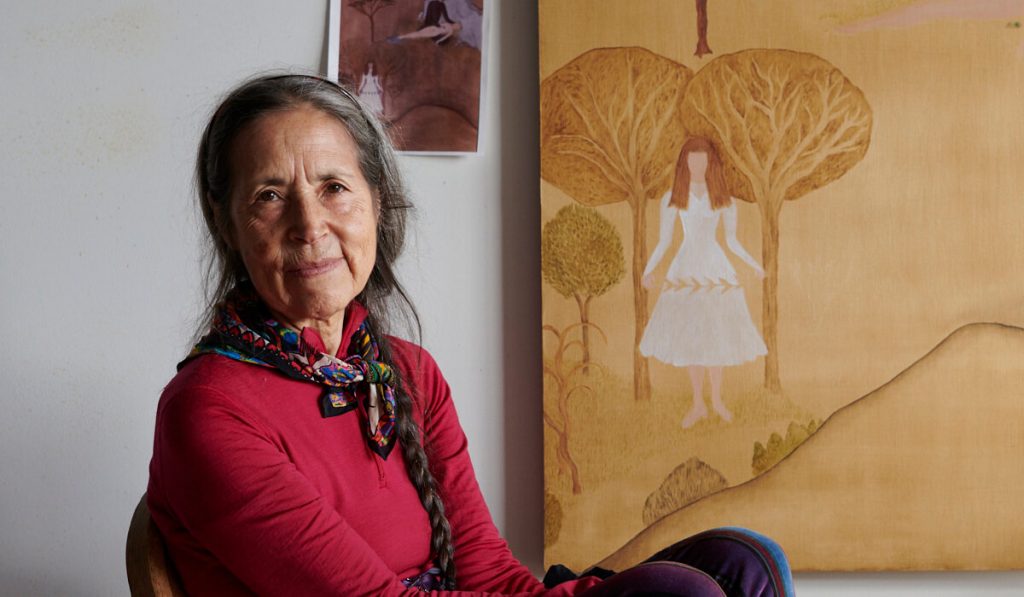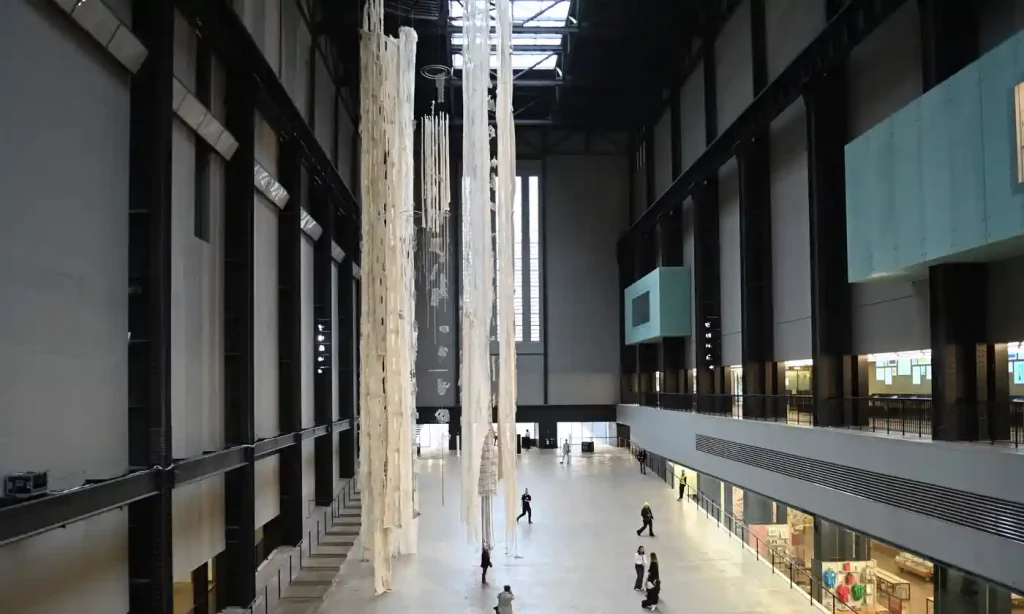5 Ultracontemporary Artists Redefining the Korean Art Landscape
The dynamic South Korean art scene is quickly becoming one of the most prominent globally, blending rich traditions with cutting-edge innovation. And...
Carlotta Mazzoli 13 January 2025
9 August 2024 min Read
Cecilia Vicuña was the artist to occupy the Turbine Hall in Tate Modern from October 2022 to April 2023. The vast space has previously housed big-scale works from names like Louise Bourgeois, Ai Weiwei, and Kara Walker. Cecilia Vicuña is best known for her work with textiles and installations, and her art is permeated by political and ecological themes.

Installation view: Cecilia Vicuña at UC Berkeley Art Museum; Pacific Film Archive, 2018. Photo by Johnna Arnold, Lehmann Maupin.
Cecilia Vicuña was born in Santiago de Chile in 1948 and studied Architecture and Arts at the University of Chile in Santiago. She was forced into exile in 1943, while she was in London on a scholarship when Augusto Pinochet took power from Salvador Allende and imposed one of the most brutal dictatorships in Latin America. Vicuña stayed in London and started to develop art around political debates. Resistance, human rights, and democracy are frequent subjects of her paintings, installations, and performances.
Vicuña moved to Colombia in 1975, where she resumed the investigation of Indigenous traditions and culture from the Andes, then to New York, where she is now based.
Some of the most emblematic installations Vicuña creates are the Quipus. They are an ongoing series that recalls the way in which the Indigenous people from the Andes used to “write” and keep memories, banned by the Spanish conquerors. Through the use of colored spun or unspun wool and other threads, she pays homage to a long tradition and brings awareness to questions of decolonization, remembrance, and ancestry.

Installation view: Cecilia Vicuña, Quipu desaparecido, 2018, Brooklyn Museum, New York, NY, USA. Photo by Jonathan Dorado.
Besides her work as a visual artist and performer, Vicuña has a long career as a poet with many published books. In series like the Palabrarmas, created in the 1970s as a direct response to the loss of civil liberties in Chile, she blurs the lines between the written text and the art world, creating visual poetry. She plays with words, transforming them into statements of resistance.
Since the time she was in exile, social justice has been a major theme in Vicuña’s work. First as a reaction to the political instability the world was going through in the 1960s and 1970s – the Vietnam War, dictatorships in many Latin American and African countries – and later as a way to bring attention to colonialism, borders, exploitation, and their consequences. In 1974, together with artists David Medalla, John Dugger, and critic Guy Brett, she created Artists for Democracy, an artist collective that brought up concerns related to anti-democratic regimes.
Precario means “precarious” in English, and in the context of Cecilia Vicuña’s art, they represent objects made to be destroyed either by time or by nature. The first precario was made with debris from the sea. They were collected, assembled on the seashore, then left to be carried away by the waves. They represent a connection with nature and its cycles but also highlight the misuse and destruction of nature.
Cecilia Vicuña, along with German sculptor Katharina Fritsch, received a Golden Lion for Lifetime Achievement at the 59th International Art Exhibition of Venice Biennale. Her long career investigating and preserving ancient traditions, shining a light on Latin American art, and developing her own vocabulary to speak about contemporary issues were specified by the curator as the reasons she got the award.

Portrait of Cecilia Vicuña. Photo: Jason Schmidt, Art Review.
Every autumn a new artist is commissioned to take over the Turbine Hall and, since it started, the installations at Turbine Hall have become one of the high points of the year for the British institution and an attraction of its own. Maybe you remember the big “sun” that Olafur Eliasson “installed” at the hall in 2003/2004?
Vicuña’s commission added to a busy year for her: besides being honored and exhibited at the Venice Biennale 2022, she also received a solo show at the Guggenheim Museum in New York. Frances Morris, the Tate Modern director, highlighted the relevance of Vicuña’s art in times of climate change and the rise of global authoritarianism.

Cecilia Vicuña’s Brain Forest Quipu, 2022, Tate Modern, Turbine Hall, London, UK. Photograph: Neil Hall/EPA.
Her Brain Forest Quipu in the Turbine Hall was made out of two large sculptures hanging from the roof. Raw wool, knotted rope, and twine interweave with delicate woven netting and suspended braided material. The sags fall and sweep the floor, freely swinging in the air. In their material, one can see tiny details: eroded glass, bones, bits of oyster shells, and other objects found in the River Thames a long time ago. These objects have been collected by collaborators from London’s Latinx communities. Vicuña captures past lives and the passage of time, as well as the language of the disappearing world in drifting soft sculptures.
DailyArt Magazine needs your support. Every contribution, however big or small, is very valuable for our future. Thanks to it, we will be able to sustain and grow the Magazine. Thank you for your help!